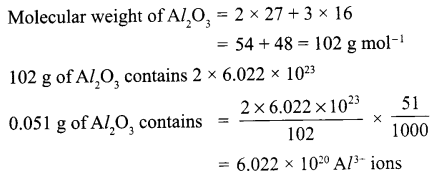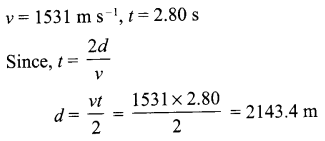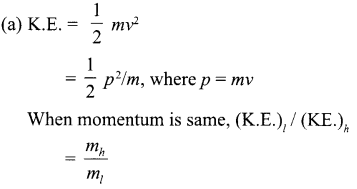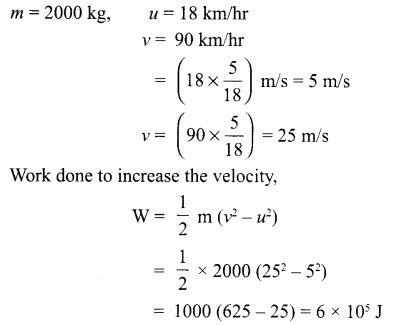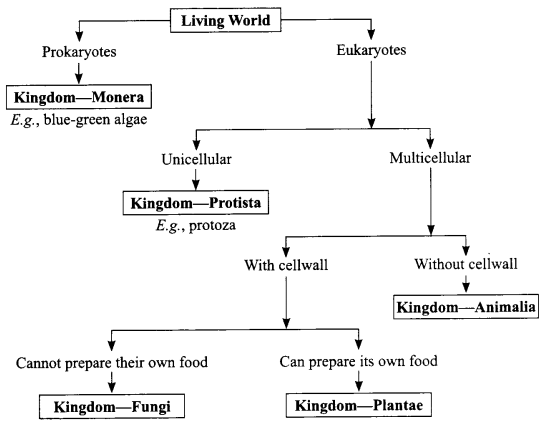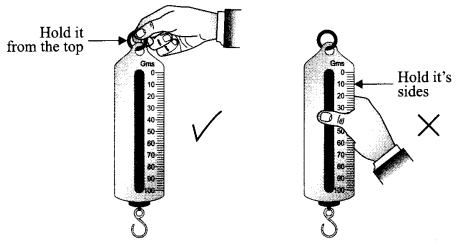CBSE Sample Papers for Class 9 Social Science Paper 4 are part of CBSE Sample Papers for Class 9 Social Science Here we have given CBSE Sample Papers for Class 9 Social Science Paper 4.
CBSE Sample Papers for Class 9 Social Science Paper 4
| Board | CBSE |
| Class | IX |
| Subject | Social Science |
| Sample Paper Set | Paper 4 |
| Category | CBSE Sample Papers |
Students who are going to appear for CBSE Class 12 Examinations are advised to practice the CBSE sample papers given here which is designed as per the latest Syllabus and marking scheme as prescribed by the CBSE is given here. Paper 4 of Solved CBSE Sample Papers for Class 9 Social Science is given below with free PDF download solutions.
Time: 3 Hours
Maximum Marks: 80
General Instructions
(i) The question paper has 27 questions in all. All questions are compulsory.
(ii) Marks are indicated against each question.
(iii) Questions from serial number 1 to 7 are very short answer questions. Each question carries 1 mark.
(iv) Questions from serial number 8 to 18 are 3 marks questions. Answer of these questions should not exceed 80 words each.
(v) Questions from serial number 19 to 25 are 5 marks questions. Answer of these questions should not exceed 100 words each.
(vi) Question number 26 and 27 are map questions of 2 marks from History and 3 marks from Geography. After completion, attach the maps inside the answer book.
Questions
Question 1:
Write about kulaks.
Question 2:
What do you mean by Holocaust?
Question 3:
Define code of conduct.
Question 4:
Define the convergent plate boundaries.
Question 5:
What do you mean by the term multiple cropping?
Question 6:
Define Human capital formation.
Question 7:
What is Buffer stock?
Question 8:
Explain the division of the French society before the French Revolution.
Question 9:
Write about the desirables and undesirables communities by the Nazis.
Question 10:
Mention any three examples of the non-democratic countries.
Question 11:
Write a note on the basic philosophy of the Indian Constitution.
Question 12:
Write the disadvantages of an electoral competition.
Question 13:
Lakes are of great economic value. Comment.
Question 14:
Explain the weather conditions and the characteristics of the cold weather season.
Question 15:
How is modem farming different from traditional farming?
Question 16:
Write a note on the dimensions of poverty.
Question 17:
“Co-operatives play an important role in food security”. Justify.
Question 18:
What are the three dimensions of food security?
Question 19:
The radicals and the liberals found the solutions to the problem of the industrial society. Elucidate.
Question 20:
What was the view of Europeans regarding the shifting cultivation?
OR
The pastoralist had to cope up with the changes in new times. Comment.
OR
Compare and contrast the enclosure movement in England.
Question 21:
What are the powers of the President of India.
Question 22:
Why do we say that the Mandal commission was a debatable issue in India?
Question 23:
How are the tropical evergreen forest different from the tropical deciduous forest?
Question 24:
Define migration. What are its causes and effects?
Question 25:
Write a note on the food security system in India.
Question 26:
Identify these features with the help of the following information and write their correct names on the lines marked on the outline map of world:
(a) One of the central powers of the First World War.
(b) One of the allied powers of the Second World War.
Question 27:
On the given political outline map of India locate and label the following features with appropriate symbols:
(a) The Western Ghats
(b) The largest state according to area
(c) Dachigam wildlife sanctuary
Answers
Answer 1:
Kulaks were rich peasants who were supposed to be holding stocks in the hope of higher prices.
Answer 2:
The killing operations of Nazi’s termed as Holocaust.
Answer 3:
During election time some norms and guidelines are issued which the political parties and candidates have to follow are called code of conduct.
Answer 4:
When two plates are moving towards each other and collide form convergent plate boundaries.
Answer 5:
When more than one crop is grown on a single piece of land in a year is termed as multiple cropping.
Answer 6:
When the existing human resource is further developed by adding more education and skill it is called Human capital formation.
Answer 7:
Buffer stock is the stock of food grains procured by the government through FCI to bring food security.
Answer 8:
The French society was divided into three different estates before the French Revolution as follows:
- The first estate: It consists of the church and the clergy. They had certain privileges by birth such as exemption from paying tax.
- The second estate: It comprised the nobles and the rich people. They also had the
privilege of exemption from paying tax along with privilege of collection of feudal dues by the peasants. - The third estate: It comprised rich businessmen, merchants, court officials, peasants etc. In this state some were rich and others were poor. They were paying all the direct taxes and had no benefits.
Answer 9:
(a) The German society was divided into two groups called Desirables and Undesirables.
(b) Blond, blue-eyed and Nordic German Aryans were the desirables who wanted a society of pure and healthy Nordic Aryans.
(c) Gypsies, blacks and the Jews were the undesirables who suffered the most.
Answer 10:
The three examples of the non-democratic countries are:
- Myanmar: The army rulers are not the people’s representatives and also the people can’t influence the government decisions.
- Chile: Dictators like Pinochet ruled.
- Nepal: The king ruled the country who were bom in a royal family.
Answer 11:
The basic philosophy of the Indian constitution are:
- The preamble is the soul of the constitution which examine and evaluate any law.
- The preamble tells us about the different sources of the constitution.
- The preamble states that India is a sovereign, socialist, secular and democratic republic country.
Answer 12:
The three demerits of the electoral competition are:
- The different parties and candidates use dirty tricks to win the elections.
- These political parties and leaders put allegations on each other.
- Electoral competition causes disunity.
Answer 13:
The lakes are having the following benefits:
- Lakes are helpful in regulating the flow of water.
- Some large lakes are helpful in generating hydroelectricity.
- They help in moderating the climate of the surrounding areas.
Answer 14:
The weather conditions and the characteristics of the Cold weather season are as follows:
- During this period there is clear sky, low humidity and temperature, and feeble arid variable winds.
- During this period frost is common in the north and snowfall in the higher slopes of the Himalayas.
- This period is marked with low temperature in the north whereas high to moderate temperature in the southern part of India.
Answer 15:
The following are the differences between the modem farming and the traditional farming:
- In modem farming latest tools and machines are used whereas in the traditional farming primitive tools are used for farming.
- In modem farming HYV seeds are used whereas in traditional farming simple seeds are used.
- In modem farming chemical fertilisers and pesticides are used whereas in traditional farming natural manures are used.
Answer 16:
The different dimensions of poverty are as follows:
- It means lack of food and shelter.
- It is a situation in which parents are not able to send their children to school.
- It is a situation when sick people are not able to get proper treatment.
Answer 17:
There are different cooperatives functioning in different parts of the country to bring food security in the country. These cooperatives sell the products to the consumers at controlled rates. Such as Mother Dairy in Delhi provides milk and vegetables to the consumers at controlled prices. Amul in Gujarat provides milk and milk products. Academy of development science in Maharashtra helps in setting up grain banks.
Answer 18:
The three different dimensions of food security are:
- Availability: It means the food grains are available in the country through production or import or the previous year stock.
- Accessibility: It means food grains are within reach of all the people of the country.
- Affordability: It means all the people of the country are able to afford i.e., can buy the nutritious food grains.
Answer 19:
The radicals and the liberals found the following solutions to the problem of the industrial society:
- They suggested to make the workforce healthy and educated.
- They opposed the privileges enjoyed by the old aristocracy.
- They asked the people to develop the value of individual effort, labour and enterprise.
- They favoured the freedom of the individuals for the development of the society.
- They said that the people should revolt to remove the existing aristocratic government.
Answer 20:
Shifting cultivation is a type of cultivation in which the farmers degrade the forest and bum it there only to clear and make a fresh patch of land to be used for cultivation. Seeds are sown with the onset of monsoon and is harvested in the month of October-November. These plots were used for cultivation for few years and then kept fallow for many years for the forest to grow.
In Europe farmers did not want to follow this type of agriculture because they felt that if they will practice this type of cultivation then the land will not be able to produce the type of timber which was needed for railways. The second reason not to practice this type of cultivation was fear of forest fire. They thought that while burning the forest, the flames may spread to other parts of the forests.
OR
The pastoralists cope with the changes in the following ways:
- As there was no enough grazing grounds, so they decided to reduce the number of cattle they had.
- When they were not allowed to some pasturelands they changed the direction of their movement and also started some other trade along with the pastoral activity.
- These pastoralists demanded their right in the management of the forests and put political pressure on the government for some support and relief.
- Some rich pastoralists left their nomadic habits. They purchased land and started a settled life.
- Some of these pastoralists started doing agriculture and some of them became dependent on the moneylenders for their survival.
OR
Enclosure movement in England had both advantages and disadvantages.
Advantages:
- This movement made England self-sufficient in terms of food grains. This movement helped in rising the food grain production as quickly as the population.
- The landlords made long term investments on land and planned crop rotation to increase the fertility of the soil.
- This allowed the landlords to expand the land under their control and produce more for the market which made the landlords rich.
Disadvantages:
- The landlords were benefitted whereas the poor were hit hard and were left helpless and miserable as they were not allowed to collect firewood from the forest or graze their cattle on the commons. Also they were not allowed to gather fruits or hunt animals.
- The poor were displaced from their land, deprived of their customary rights and could not find secured jobs anywhere.
Answer 21:
The President of India is the head of the state and exercises the following powers:
- All the activities of the government takes place in his name only.
- All the major decisions related to the policy or laws are taken in his name.
- He appoints the Chief Justice of India, the judges of the Supreme Court and the High Courts in the states, the governors of the states etc.
- All the international treaties and the agreements are signed in his name.
- The President of India is the supreme commander of the defence forces of India.
Answer 22:
It is very true that Mandal commission was a debatable issue in India. This was due to the following reasons:
- A number of cases were filed in the courts against this order.
- Different sources of media raised different views and opinions.
- It was protested and counter-protested violently.
- As the other backward castes were given reservation in this so, people raised the issue that this will bring inequality in the society with those necessitated reservations.
- Some were in the view that this will be an obstacle in the national development
Answer 23:
The tropical evergreen forests and the tropical deciduous forests are the two different types of vegetation found in India. The major differences between these two are as follows:
- The tropical evergreen forests are found in the areas of heavy rainfall of more than 200 cm whereas the tropical deciduous forests are found in the areas of rainfall between 70 cm and 200 cm.
- The trppical evergreen forests has luxuriant vegetation of all kinds in which the height of the trees are up to 60m whereas the tropical deciduous forests are the most widespread forests in India with two sub-types i.e., tropical moist forests and tropical deciduous forests.
- In the tropical evergreen forests trees having no definite time to shed their leaves therefore they appear green all through the year whereas in the tropical deciduous forests trees shed their leaves in dry summer for about 6 to 8 weeks.
- The tropical evergreen forests are found in the areas of Western Ghats, Assam, Tamil Nadu, Lakshadweep and Andaman and Nicobar islands whereas the tropical deciduous forests are found in the areas of Jharkhand, Odisha and Chhattisgarh.
- The tropical evergreen forests having the important trees like ebony, mahogany, rosewood, cinchona etc, whereas the tropical deciduous forests having the important trees like teak, peepal, neem sal etc
Answer 24:
Migration can be defined as the movement of people from one place to another. Migration is controlled by number of push factors and the pull factors.
- Push factors: The different causes which pushes people to move out of a place are termed as the push factors. These are basically the disadvantages of a place or unfavourable conditions of a place such as – unemployment, illiteracy, lack of basic services like health and education etc.
- Pull factors: The different causes which pulls people to come to a particular place are termed as pull factors. These are basically the advantages of a place or the favourable conditions of a place such as – job opportunities, better health and education facilities etc.
These push factors and the pull factors lead to the following different types of migration:
- Rural to rural migration
- Rural to urban migration
- Urban to urban migration
- Urban to rural migration.
Out of these different routes of migration the most common route of migration in India is from rural to urban areas.
Migration can also be of the following two types – internal and international. Internal migration means movement of people within the country and the international migration means movement of people outside the country.
In case of internal migration the total population remain same but the change can be seen at state or local level in terms of total population, sex ratio, literacy rate, rural urban population etc.
Answer 25:
The food security system of India is carefully designed to ensure the availability of food to all the people at all the times. The food security system is composed of the following two components:
- Buffer stock: It is the stock of food grains like rice and wheat procured by the government through the food corporation of India (FCI). The FCI purchases rice and wheat from the areas of surplus food production at a pre- announced price called minimum support price (MSP).
- Public distribution system: This is a system of distribution of food grains among the poorer sections of the society basically those who are below poverty line. This is done through the ration shops which are also called fair price shops.
Answer 26:

Answer 27:

We hope the CBSE Sample Papers for Class 9 Social Science Paper 4 help you. If you have any query regarding CBSE Sample Papers for Class 9 Social Science Paper 4, drop a comment below and we will get back to you at the earliest.




